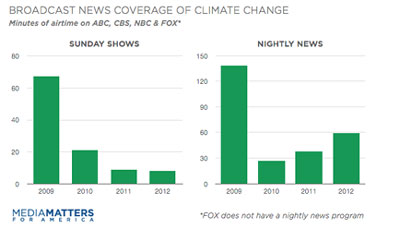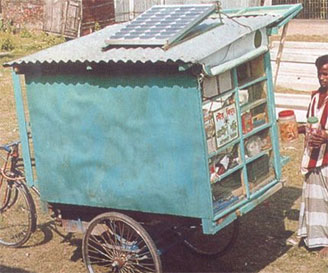- Home
- Featured (Page 2)
Featured

This amazing excerpt from the book, Let It Shine: The 6000-Year Story of Solar Energy, provides fascinating context to energy choices the US made in the 1950s. It was a pivotal moment for the advent of solar energy, but the US supported nuclear instead. What’s most interesting is all-out backing the US government gave the nuclear energy industry to get it off the ground. Similar histories are likely written about government support for oil and gas when they first emerged. Renewable energy industries have had no such support – infinitesimal by comparison. It’s a testament to pioneers in the solar and wind industries and a handful of supportive governments that they are nearing grid parity today. Prelude to the Embargo For almost three decades after the end of WWII, the US had few problems with its energy supply. Its industry, commerce, and homes all had ready access to oil and gas from both domestic and foreign sources. Most of the oil was close to the surface, easy to tap, and economical to extract. Foreign governments sold their oil to American companies at extremely low prices, and US government subsidies also helped to keep prices low and profits high. Natural gas […]
Read More

by Rona Fried One of the biggest barriers to addressing climate change is "spin" – how the news media does or doesn’t cover it and how PR firms promote industry messages. While we can observe media coverage, the role of public relations (PR) is much less visible. In a survey of the world’s 25 largest PR firms conducted by The Guardian and Climate Investigations Center, the 10 that responded say they don’t take on clients that want to promote climate change-denial or block regulations that would bring emissions down. It’s a strong position to take considering that disseminating misinformation regarding climate change and the role of fossil fuels has become a multi-billion dollar industry. "We would not support a campaign that denies the existence and the threat posed by climate change, or efforts to obstruct regulations cutting greenhouse gas emissions and/or renewable energy standards," says Michelle Selesky of Weber Shandwick. "We ensure that our own work complies with local laws, marketing codes and our own code of business conduct. These prevent advertising that is intended to mislead and the denial of climate change would fall into this category," says UK-based WPP, the world’s largest advertising firm, which owns Burson Marsteller […]
Read More
Although you are likely aware of the low pay and poor working conditions workers experience as they make our clothes and electronics in other parts of the world, but have you ever considered the shipping process itself? Imagine what a shipping port looks like – you probably see stacked crates, people driving forklift loads of merchandise and huge ships pulling in and out. In today’s world, however, this is but a fantasy. Since 1970, the amount of goods shipped by sea has grown fourfold. Asian-made clothing, cars, sneakers, computers and cell phones account for much of that increase. Shipping has become so cheap that it makes more sense financially for Scottish cod to be sent 10,000 miles to China to be filleted and then sent back to Scottish shops and restaurants than to pay Scottish filleters. This economy of scale translates into fewer greenhouse gases emitted per ton shipped per mile: 11 grams of CO2 emissions by ship compared with 40 by rail, 110 by truck and 1193 by air. The same proportions are true for other toxic emissions such as nitrous oxide and particulate matter. A
Read More

Before Japan’s nuclear meltdown, it looked like the world could be ready for a nuclear renaissance, but it seems we are entering a big hydro renaissance instead. China’s Three Gorges Dam – currently the world’s largest at 22.5 gigawatts (GW) – looks like small potatoes compared to those planned for Africa’s Congo and Brazil’s Amazon. And China just OK’d construction of another enormous 20 GW hydroelectric project with a much taller, even more destructive dam than Three Gorges, the Sichuan project . Brazil’s Amazon Brazil is spending $93 billion on 20 hydropower plants and 34 dams that threaten 2500 square miles of Amazon rainforest. One of those dams, the 11 GW Belo Monte dam, would be the third largest in the world and is 20% completed. Physically blocked for almost a year by indigenous people, they are desperately trying to preserve their home and the pristine Amazon rainforest it would destroy. It would flood 200 square miles, causing massive deforestation, greenhouse gas emissions and irreparable damage to the ecosystem, displacing over 20,000 people from 40 ethnic groups. The Xingu River is their lifeline. They say: "We’re not leaving until you get out of our villages. You have made the fish […]
Read More
by Jason Coughlin What started out in a Portland, Oregon neighborhood as a way to buy solar at a discount has now spread across the US – and into the workplace. This latest trend in solar, which has employees across the country opting in to collectively purchasing solar for their homes, is creating an exciting opportunity for solar companies. Installers selected through group-by-in programs can tap into aggregated groups of interested buyers and, in the process, reduce their customer acquisition and marketing costs, speed sales cycles and pass the savings on to customers. This increased volume and velocity hold great potential for expanding installations workforces and growing local economies. The solar industry is just one of the many beneficiaries of these employee purchasing programs. For employees of companies offering the benefit, group buying makes going solar easier and cheaper. Most programs have focused purchasing solar PV systems; a few have incorporated solar hot water systems and energy efficiency retrofits. Program organizers – companies offering the benefit, or third-party administrators – set up the program and do most of the homework for participants. That includes soliciting installers through a rigorous RFP process, negotiating the group discount and either selecting the installer […]
Read More
This inspiring article from Solar Today is about a nonprofit, Builders of Hope. They do complete green retrofits to vacant or foreclosed homes, move them to clustered communities and sell them to low-income families at cost. Major development projects are underway in 10 communities and 6 cities. by Richard Crume What can be done with the tens of thousands of vacant, abandoned and foreclosed houses found in virtually every community across America? Builders of Hope is turning these houses into energy efficient, affordable homes. Says Founder and CEO Nancy Welsh, "We have a greater number of houses sitting vacant than we have for decades, and at the same time, more families are in need of decent, reasonably priced housing than ever before. My goal is to transform these vacant houses into affordable, comfortable green homes in safe communities while creating jobs for local builders and the construction industry." Americans demolish about 225,000 houses every year, often making room for new housing subdivisions, commercial developments or roadway construction. On average, each demolition results in about 35,000 pounds of debris, representing up to 30% of landfill content in many communities. The US is also experiencing an epidemic of foreclosures and many homes […]
Read More

We wrote about Grameen Shakti back in 2003 and its mission to bring electricity to the poorest of the developing world in the most reliable and sustainable way. Founded in 1996, Grameen Shakti is an offshoot of Grameen Bank, the pioneering micro-finance institution, which was established in 1976. By 2002, Grameen Shakti had installed 11,000 PV sytems in homes, schools and businesses in Bangladesh. By the end of this year, it will have 1 million solar systems under its belt, with a goal of 5 million by 2015. The nonprofit installs 1000 systems a day! — by Nancy Wimmer In one of the poorest countries on the planet a renewable energy service company is installing one thousand solar home systems – a day. Not in its capital or busy urban centers, but where 80 percent of the population lives – in rural Bangladesh. The company, Grameen Shakti, literally translates as rural energy. By the end of the year it will have installed a total of one million solar systems and now has expansion plans to install five million systems by 2015. Shakti is succeeding where business as usual has failed, and in the year of Sustainable Energy for All, it’s […]
Read More
In just eight years, Tim Thornhill transformed the oldest winery in the US – with degraded land and polluted water – to the model of sustainable practices it is today. by Laura Fraser When Tim Thornhill moved to a ranch in the hills near Ukiah, California, in 2002, he didn’t plan to become a vintner. The former landscape contractor — whose voice still carries the soft twang of his Houston upbringing — had relocated with a single goal in mind: to build a "paradise" for his family. Thornhill had started his landscape business back in Texas with little more than a wheelbarrow and a pickup truck, and then moved to Orlando, Florida, where he spent more than 10 years working on Disney theme parks and resort hotels. But within two years of settling in Mendocino County, Thornhill and his brother, Tom, began eyeing a nearby parcel of land that had come up for sale. The Parducci winery, the oldest in the county, was an anchor of local viniculture. But the property itself had seen better days. The regular application of petroleum-based pesticides, fungicides, and herbicides had distressed the vines. Wastewater polluted with oxygen-depleting wine sugars flowed into a cabernet-colored pond […]
Read More
By Rona Fried The lofty purpose of the Rio+20 Earth Summit was to “establish an institutional framework for sustainable development and to establish a green economy.. While not legally binding, the document that emerges from Rio+20 will serve as a roadmap for sustainable development.” With that kind of set up, the conference couldn’t help but disappoint – let’s solve the world’s problems with this one simple text that 180 countries will be happy to sign onto! Still, delegates managed to approve a 49-page document, “The Future We Want, ” which reaffirms much of the text from the same conference 20 years ago. In fact, the word “reaffirm” appears 59 times in the text! Complaints from the NGO community are its wishy washy language, lack of specifics, timetables or deadlines. Greenpeace calls it a “failure of epic proportions,” while the Pew Environment Group says, “It would be a mistake to call Rio a failure, but for a once-in-a-decade meeting with so much at stake, it was a far cry from a success.” Here’s an excerpt from the text: “We recognize that the planet Earth and its ecosystems are our home and that Mother Earth is a common expression in a number […]
Read More
There’s no shortage of opinions on the Commerce Department’s decision to impose tariffs on imports of Chinese solar panels into the US. The Department ruled that Chinese solar manufacturers did indeed flood the US with panels at prices below production costs, making it hard for US manufacturers to compete. It set hefty tariffs of 31-250% on Chinese solar imports of 31.2% for Suntech, Trina Solar, Yingli Green and 59 other companies that agreed to be investigated. All other companies have tariffs of a whopping 250%. The tariffs are much higher than the anticipated 10-12%. In light of the massive surge of imports ahead of the determination, the duties apply retroactively for 90 days. But that could change when the Department issues a final rulling in October. And the tariffs apply solely to crystalline silicon photovoltaic cells, not the final solar panels if they are made with cells from another country. In March, Commerce ruled "Because China is unfairly subsidizing solar production" tariffs will be set at 2.90%-4.73%. Rates vary depending on the subsidies the company receives from China’s government. The two tariffs combined could raise the price by about $1.10 per watt, 17% higher than the current spot price of […]
Read More
Page 2 of 182«12345...102030...»Last »



